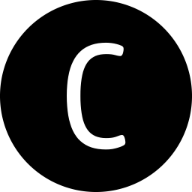The Hidden Costs You Need to Know About Your CFD Trading Broker

CFD trading is often marketed as an efficient and cost-effective way to access global markets. While this is true to some extent, many traders fail to account for the hidden costs associated with their CFD trading broker. These charges, though not always immediately apparent, can quietly erode your profits over time if you’re not careful. Understanding these costs is crucial for making informed trading decisions and maximizing your returns.
The Spread: The Silent Cost of Every Trade
The spread is the difference between the bid and ask price, and it’s how most brokers generate revenue. While spreads may seem small at first glance, they can quickly add up, especially for high-frequency traders. Tight spreads are generally more favorable, but some brokers offset their lower spreads with additional fees, creating a trade-off that isn’t always obvious.
Commissions That Aren’t Always Transparent
Some brokers advertise commission-free trading, but this doesn’t always mean zero costs. In many cases, these brokers incorporate their fees into the spread, making it wider than average. On the other hand, brokers that charge explicit commissions per trade can sometimes offer narrower spreads. It’s important to understand both models to determine which is more cost-effective for your trading style.
Overnight Financing Costs
Also known as swap fees, overnight financing costs apply to trades held open past a certain time, typically at the end of the trading day. These fees are tied to the leverage used and the interest rate of the underlying asset. While they might seem insignificant for short-term trades, they can become a substantial expense for long-term positions. Traders often overlook these charges, only to find their profits significantly reduced by accumulated fees.
Inactivity Fees
Many brokers impose inactivity fees on accounts that haven’t engaged in trading for a specified period. These charges are designed to encourage active trading but can be a nuisance for traders who prefer to take a long-term approach or step away from the markets temporarily. Be sure to review your broker’s terms to avoid unexpected deductions from your account.
Currency Conversion Fees
CFD trading often involves assets denominated in different currencies. If your trading account operates in one currency but you trade assets in another, your broker may apply a currency conversion fee. These charges, though small on individual trades, can build up over time, especially if you’re trading internationally or across multiple asset classes.
Withdrawal and Deposit Charges
While many brokers advertise free deposits and withdrawals, some apply fees depending on the payment method used. Wire transfers, for example, may incur higher charges compared to credit cards or e-wallets. These fees can catch traders off guard, particularly when withdrawing larger sums.
Data and Platform Subscription Fees
Certain brokers charge for access to advanced data feeds, premium tools, or proprietary platforms. While these resources can enhance your trading experience, they represent an additional cost that isn’t always included in the advertised pricing. Always verify whether your broker’s platform and data services are included in your account or require extra payment.
Hidden Markups on Leverage
Leverage is one of the key attractions of CFD trading, but it’s not without its hidden costs. Some brokers subtly incorporate additional fees into their leveraged products, increasing the effective cost of borrowing. Traders need to carefully review how their broker structures leveraged trades to avoid overpaying.
How to Manage Hidden Costs
Understanding and managing these hidden costs starts with choosing a transparent broker. Reputable brokers clearly outline their fees in their terms and conditions or on their websites. Take the time to review this information and calculate how these charges may impact your trading over time.
Comparing brokers is another essential step. Evaluate their fee structures, spreads, and policies on withdrawals, deposits, and currency conversions. Opt for a broker that aligns with your trading style and minimizes unnecessary expenses.
Trading Smart with the Right Broker
The costs associated with a CFD trading broker are an inevitable part of trading, but hidden fees don’t have to eat away at your profits. By understanding these charges and selecting a broker that prioritizes transparency, you can take control of your trading expenses and focus on achieving your financial goals. A little diligence goes a long way in ensuring that the money you save stays in your account—not your broker’s pocket.
